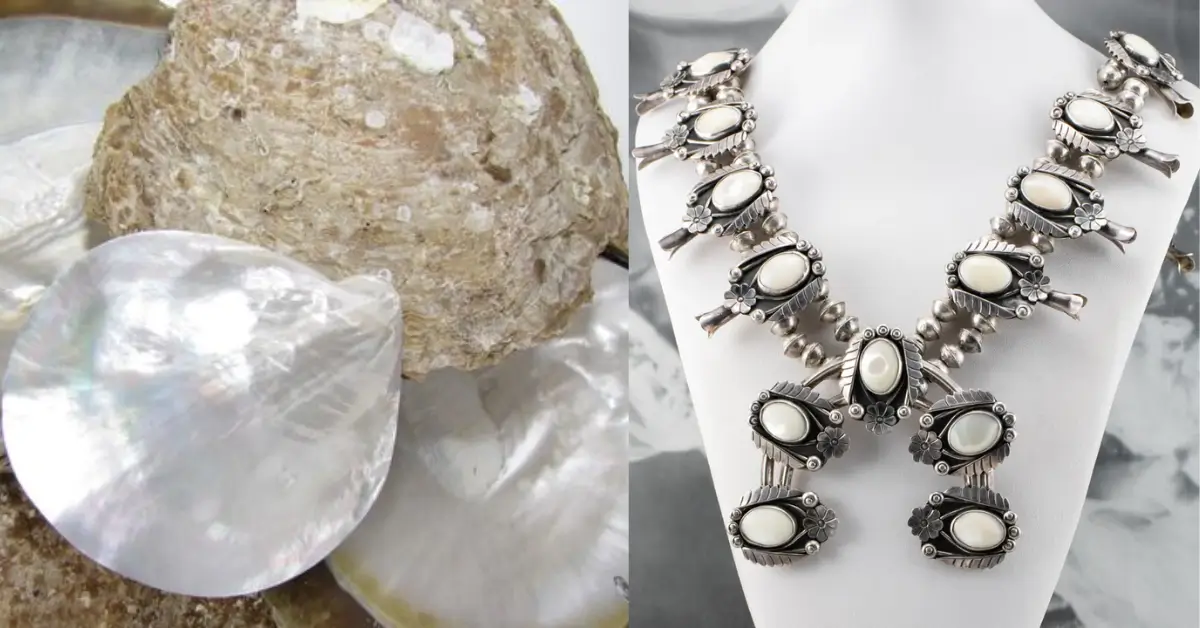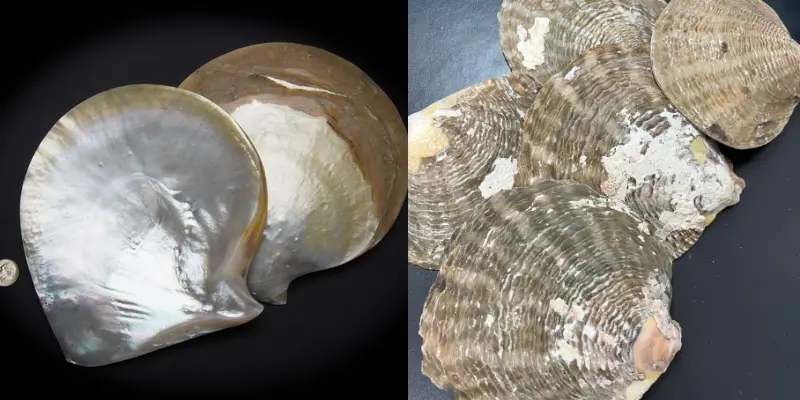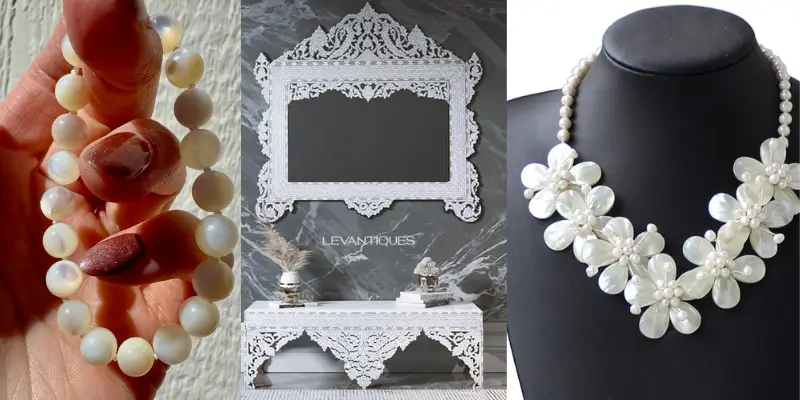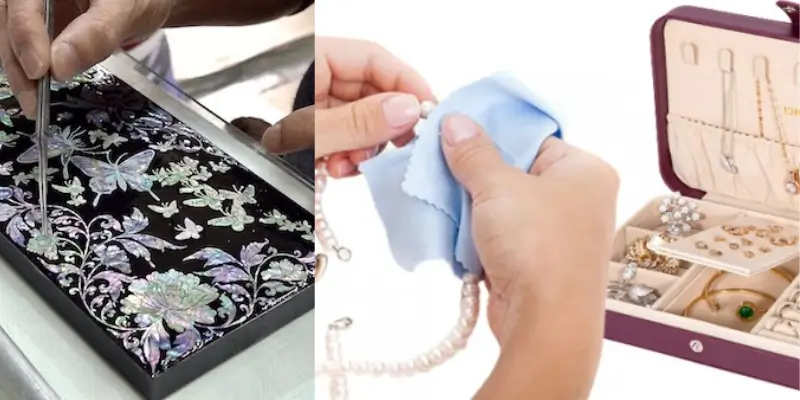Mother of Pearl Jewelry and Decoration: History, Value, and Care

Mother of pearl, also known as nacre, is a material that has mesmerized people for centuries with its shimmering, iridescent appearance. Found on the inner layer of certain mollusk shells, this organic substance has been treasured for its beauty and versatility in jewelry, decoration, and even in practical items like buttons.
Whether you’re drawn to its radiant glow or fascinated by the natural processes that create it, mother of pearl holds a timeless charm. In this article, we’ll dive into every aspect of mother of pearl, from its formation to its cultural significance, ensuring you walk away with a newfound appreciation for this fascinating material.
What is Mother of Pearl?
Mother of pearl, also called nacre, is the smooth, glowing layer found on the inner surface of mollusk shells, including oysters and abalones. It is composed of thin layers of aragonite (a form of calcium carbonate) combined with organic proteins.
These materials form the beautiful, iridescent surface that reflects light in multiple colors. The way light interacts with the layers gives mother of pearl its distinctive shine and glow.
Unlike pearls, which are round and formed from layers of nacre around a foreign object, mother of pearl is part of the mollusk’s shell structure itself. This lustrous material has been valued for centuries in decorative arts, and its unique properties make it both practical and stunning for a variety of uses.

How is Mother of Pearl Formed?
Mother of pearl forms naturally as part of the mollusk’s defense mechanism. When foreign particles or irritants, such as sand, enter the shell, the mollusk secretes nacreous layers to cover the irritant and protect itself.
These layers harden over time, creating a smooth, shiny surface that both protects the mollusk and adds beauty to its shell. The process begins with the secretion of tiny crystals of calcium carbonate in the form of aragonite.
These crystals are arranged in thin layers, held together by organic proteins, creating the nacre that lines the inside of the mollusk’s shell. Over time, these layers build up, producing the characteristic iridescence that gives mother of pearl its glow. This natural formation process means that every piece of mother of pearl is unique.
Read Also: Alicia Case Atlanta
Difference Between Mother of Pearl and Pearls
Though both mother of pearl and pearls are made from nacre, they are quite different in structure and formation. Pearls are formed when an irritant becomes trapped inside a mollusk.
The mollusk then coats the irritant with nacre, forming a spherical object. In contrast, mother of pearl is part of the mollusk’s shell itself, covering the inside surface in layers. Another key difference is in their uses.
Pearls are typically set into jewelry as individual gems, while mother of pearl is used more broadly in jewelry, decorative inlays, and other objects. Both are prized for their beauty, but mother of pearl’s larger surface area allows for different types of designs and applications.
Uses of Mother of Pearl in Jewelry and Decoration
Mother of pearl is widely used in the jewelry industry due to its luminous appearance and versatility. It can be carved into shapes, polished to a high shine, or set into a variety of metals for rings, bracelets, and necklaces.
Its soft yet resilient nature makes it perfect for intricate designs, while its natural beauty adds a touch of elegance to any piece. Beyond jewelry, mother of pearl is also popular in decorative inlays. It has been used to adorn musical instruments, furniture, and even architecture.
Mother of pearl buttons have long been a staple in fashion, adding a touch of luxury to clothing. Whether it’s adding beauty to everyday items or creating one-of-a-kind art pieces, mother of pearl’s uses are as varied as its forms.

Cultural and Symbolic Significance of Mother of Pearl
Mother of pearl has been associated with various meanings and symbolic values across different cultures. In many traditions, it represents purity, protection, and nurturing due to its origins in the sea.
The iridescent material is believed to enhance creativity, intuition, and emotional balance, making it popular in jewelry and spiritual items. Throughout history, mother of pearl has been treasured by royalty and spiritual leaders.
Its reflective properties and organic beauty make it a symbol of wealth and power, often used in ceremonial objects and royal decorations. Its symbolic significance continues today, with mother of pearl being a favorite material in both fashion and holistic practices.
Types of Mother of Pearl and Variations in Color
The color of mother of pearl can vary depending on the type of mollusk it comes from. Abalone shells, for instance, are known for their vibrant, multicolored nacre, while oyster shells often produce more subtle, white, or cream-colored mother of pearl.
The natural variations in color are part of what makes mother of pearl so unique and appealing. These color variations are due to differences in the mollusk’s environment and diet, as well as the specific nacre layers formed.
Some mother of pearl exhibits soft pastels, while others have deep blues, greens, and even purples. This wide range of colors means that mother of pearl can be used in a variety of settings, from understated elegance to bold, eye-catching designs.
Care and Maintenance of Mother of Pearl Items
Despite its beauty, mother of pearl requires careful maintenance to keep it looking its best. Being an organic material, it is softer and more susceptible to scratches than harder stones like diamonds.
To care for mother of pearl jewelry or decorative items, it’s important to keep them away from harsh chemicals, which can erode the nacre surface.
To clean mother of pearl, simply use a soft cloth with a mild soap and water solution. Avoid using abrasive cleaners or brushes, as they can damage the delicate surface. Storing mother of pearl in a soft pouch or lined jewelry box can also help prevent scratches and maintain its shine.

Value and Pricing of Mother of Pearl
The value of mother of pearl can vary depending on factors like its quality, size, and color. While it is generally less expensive than pearls, high-quality mother of pearl pieces, especially those with rare colors or intricate designs, can still fetch high prices in the jewelry industry.
Mother of pearl from abalone shells, with its vivid rainbow hues, tends to be more expensive due to its rarity and unique beauty. On the other hand, more common white or cream-colored nacre, often found in oysters, is more affordable.
However, no matter its price, mother of pearl offers exceptional beauty at various price points, making it accessible to many.
Environmental and Ethical Considerations in Harvesting Mother of Pearl
With the increasing demand for sustainable practices, the ethical harvesting of mother of pearl has come under scrutiny. Like natural pearls, mother of pearl is often harvested from mollusks that are farmed in aquaculture.
While this can help preserve wild populations, it’s essential to ensure that farming practices are environmentally sustainable. Many organizations are now focusing on more ethical methods, ensuring that oysters and abalones are harvested without causing harm to ecosystems.
Consumers are encouraged to look for ethically sourced mother of pearl to ensure that their purchases are aligned with environmental conservation efforts.
Famous Items and Uses of Mother of Pearl Throughout History
Mother of pearl has been used in some of the world’s most famous and iconic objects. Ancient civilizations used it for decorative arts, adorning everything from temples to royal artifacts.
In modern times, mother of pearl has graced the faces of luxury watches, high-end furniture, and even musical instruments, including guitars and pianos.
One of the most well-known uses of mother of pearl is in mother of pearl buttons, which were highly fashionable in the 19th and early 20th centuries. These buttons added elegance to clothing and were considered a sign of quality craftsmanship.
Read Also: Future Net Worth
Quick Facts
- Mother of pearl is an iridescent material found in mollusk shells.
- It is made from layers of aragonite and organic proteins.
- Used in jewelry, decorative inlays, and fashion.
- Symbolizes purity, protection, and creativity in many cultures.
- Requires careful maintenance to preserve its beauty.
Final Thoughts
Mother of pearl is more than just a beautiful material—it’s a piece of nature’s artistry. From its formation within mollusks to its rich history in decorative arts, mother of pearl continues to captivate people with its luminous beauty and unique properties.
Whether you’re drawn to its elegance in jewelry or its symbolism in culture, mother of pearl remains a timeless treasure that brings joy and fascination to all who encounter it.
FAQs
What is the difference between mother of pearl and pearls?
Mother of pearl is part of a mollusk’s shell, while pearls are round objects formed inside the mollusk from layers of nacre.
How do I clean mother of pearl jewelry?
Use a soft cloth with a mild soap and water solution, avoiding abrasive cleaners and chemicals that can damage the surface.
What makes abalone shell mother of pearl unique?
Abalone shell mother of pearl is prized for its vibrant, multicolored nacre, making it highly desirable in jewelry and decorative items.





